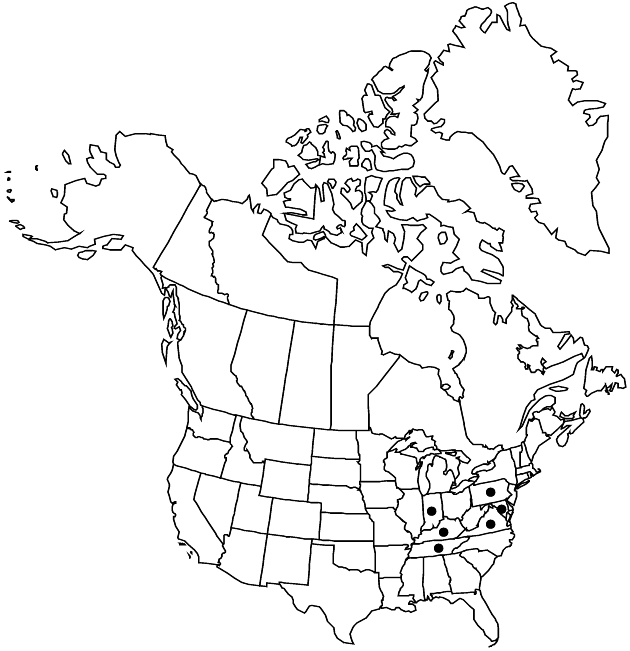Solidago rupestris
Ann. Nat. 1: 14. 1820.
Plants 50–150 cm (solitary or clustered); rhizomes creeping, elongate. Stems 1–10+, erect, proximally glabrous, increasingly puberulent distally into arrays. Leaves: basal 0; mid and distal cauline numerous (sometime 100+ per stem), crowded, sessile or subsessile; blades linear-elliptic, mostly 50–120 × 6–12 mm, tapering at both ends, margins remotely serrulate or subentire, 3-nerved, faces glabrous or sometimes puberulent abaxially on midnerves. Heads 80–900+, in paniculiform arrays, branches recurved, secund. Peduncles 1–3 mm, sparsely strigose; bracteoles linear, 1–3. Involucres narrowly campanulate, 2–3 mm. Phyllaries in 3–4 series, linear-lanceolate, strongly unequal, midribs raised, enlarged apically, apices acute to usually obtuse or rounded, apically ciliate. Ray-florets mostly 7–11, 1–2 × 0.1–0.2 mm. Disc-florets 2–7; corollas 2–3 mm, lobes 0.4–0.6 mm. Cypselae (narrowly obconic) 1–1.5 mm, sparsely strigillose; pappi 2–2.5 mm. 2n = 18, 36.
Phenology: Flowering Jul–Sep.
Habitat: Riverbanks
Elevation: 0–200+ m
Distribution

Ind., Ky., Md., Pa., Tenn., Va.
Discussion
Solidago rupestris is similar to S. canadensis in head size but with fewer rays, and it is vegetatively more like S. gigantea. It is uncommon, occurring in a series of disjunct populations with an apparent gap between eastern and western areas of the range.
Selected References
None.